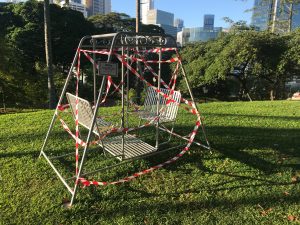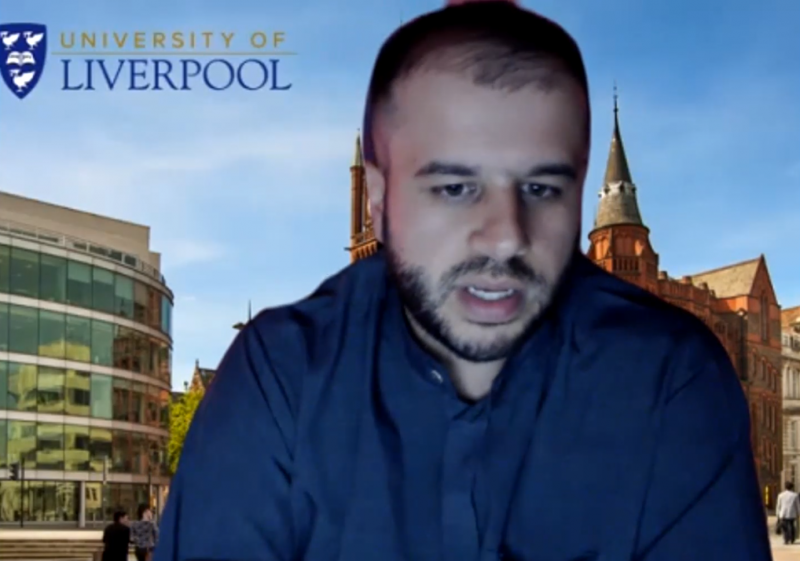Despite the emergency conditions of the time, nothing ties the heteronormative logics of kinship to the epidemiological logics of the social bubble. The 17 days of June were merely one example of the reification of the nuclear family unit in Singapore and how it is achieved through law and policy, writes Pavan Mano
_______________________________________________
Common sense is an interesting thing. Particularly in those not infrequent moments when it becomes clear that it isn’t, in fact, all that commonly distributed and, quite often, doesn’t actually make very much sense. These moments offer an opportunity – even if quite often missed – to unwind, untangle, and unmake some of these articulations of common sense – hopefully in favour of something better. This is one such moment. After all, “pandemics have forced humans to break with the past and imagine their world anew” (Roy 2020). We’ve been forced, collectively, to confront the question of care and the various conditions under which it’s extended to different degrees, to particular categories of people, in particular circumstances, and so on – the contingencies of care, in other words. In the face of the conspicuous insufficiencies that have been brutally exposed over the course of the past year and a half, it would be awfully remiss of us to eschew reimagining how our world and societies are arranged and organized.
We’ve known for some time now that COVID-19’s spread is facilitated by close physical contact particularly in insufficiently ventilated spaces. Physical interactions have thus been restricted and regulated, subject to degrees of surveillance and scrutiny, managed and monitored in unfamiliar ways. Tracing the webs of viral contagion and preventing them from spinning out of control requires first making physical interactions legible so that their onward trajectories can be sufficiently curtailed with quarantine or other infection control measures. At different stages of the pandemic then, different constraints have been placed on physical interactions. I’m interested in one such constraint that was temporarily put in place in Singapore – only permitting physical interactions between one and one’s parents or grandparents whilst disallowing others. Maybe, at first glance, this doesn’t appear especially remarkable. But I think it’s worth paying attention to how the contours of this particular constraint were drawn as a common sense outcome of a reflexive reliance on the nuclear family as the basic social unit. Asking how the rubrics of common sense function here is simultaneously an invitation to imagine a newer and better alternative to the structures and strictures of kinship that have been reified down the decades.
2020 was the year the overwhelming majority of people in Singapore came to know and experience the lockdown as a phenomenon. This story echoed elsewhere around the globe – perhaps with a different tempo but nevertheless with the same overall narrative arc. The country held COVID-19 at arm’s length in the initial months with a combination of border control and quarantine measures. But by the end of March, it was battling a massive outbreak in migrant worker dormitories as well as untraceable infections that were rising at an uncomfortably rapid rate. Lockdown beckoned. On the evening of April 3rd, Singapore’s prime minister Lee Hsien Loong addressed the country and confirmed what everyone expected: Singapore would enter a four-week circuit breaker; this was later extended by a further four weeks to 1st June. Schools and workplaces (except for essential services) were closed; shops were shuttered and restaurants could only offer take-outs; meeting people from different households was disallowed; residents were instructed to leave their homes only when absolutely necessary (Abdullah and Kim 2020).
Singapore Circuit Breaker
In her evocative essay, Arundhati Roy (2020) describes the lockdown as “work[ing] like a chemical experiment that suddenly illuminated hidden things.” Reading it as it was published the morning immediately after the Singaporean announcement opened a premonitory register – this was a foretelling of things to come. As presaged, it did illuminate plenty, as has been carefully documented here and here, for example. And not only during lockdown but in the aftermath too did light continue to shine on things that weren’t necessarily hidden but had simply been taken as common sense.
When the circuit breaker ended, it signalled that that the currents of care that mark people’s affection for one another could flow again through physical interactions. The government announced that restrictions would be eased progressively and in three phases. To all intents and purposes, Phase 1 was not very different to the circuit breaker – all physical gatherings and interactions continued to be disallowed except for one very specific set of circumstances. “Each household [could] visit their parents or grandparents staying elsewhere” (gov.sg 2020). According to the government, this would “allow families to spend time and provide support to one another” (Abu Baker 2020). 17 days later, on 19th June, Phase 2 kicked in, in which people could meet whomever they wanted in groups of up to 5.
The 17 days of June were a manifestation – albeit an exceptionally visible one, given the circumstances – of a particular understanding of kinship that “privileges the heterosexual nuclear family unit as the preeminent cache of support, whilst simultaneously minimising the validity and legitimacy of other forms of social arrangements and kinship ties as circuits of care” (Mano 2021: 3). In some ways, the few days of restrictions followed the logics of a ‘bubble.’ It’s a relatively new concept in disease management but some countries have found the bubble to be a feasible way of mitigating the painful loneliness that lockdowns inevitably bring whilst keeping physical interactions between different households to a minimum. They were permitted under certain conditions in the UK, for example, to help people support and care for each other during lockdown. New Zealand instituted a similar rule as well for those who were living alone. But the Singaporean remix was intriguing because, in addition to the epidemiological logics of the bubble, it also followed a second set of logics: the heteronormative logics of kinship structures.
The fact that there was a need for some degree of restraint to be placed upon physical interactions is not really in question. But the rubrics of this restraint, the rationalization of a specific set of social relations as more deserving of physical reconnection instead of others, divulges a certain hierarchy of social relations. Some were prescribed; others were proscribed. It’s in this sense the “distribution of permissibility according to whether social ties figured within the heterosexual nuclear family unit allows us to see the stratification of the social in Singapore, where only heteronormative kinship structures are regarded as legitimately capable of conveying support and care” (Mano 2021: 3). In the aftermath of the circuit breaker, everyone had people whom they missed and wanted to see again; and everyone undoubtedly had their own internal hierarchies of social relations – people that they wanted to meet a little bit more than others. As it turns out, in combining eligibility with kinship structures, so did the state; and state hierarchies are far more consequential than personal hierarchies because they can be hitched to the wagon of law and public policy.

Heteronormative thinking
Particularly for those predisposed to bureaucratic sympathies, it might be tempting to brush the 17 days off as a common sense way of restricting physical interactions between different households that only applied for a short time. It’s probably not wrong but it’s also probably missing the forest for the trees. There’s something to be gained from thinking more carefully about this instantiation of common sense, this moment that displays the “deeply foundational heteronormative logic [where] a specific family norm is positioned at the centre of Singapore society” (Oswin 2019: 17–18). In other words, the 17 days of June were merely one example of the reification of the nuclear family unit and how it is achieved through law and policy.
Instead of dismissing them as a one-off or justifying them as an emergency necessity, then, it’s far more valuable to think about why reflexively elevating particular kinship structures appears to ‘make sense’ at the expense of a more expansive understanding of social ties. Despite the emergency conditions of the time, nothing ties the heteronormative logics of kinship to the epidemiological logics of the social bubble – after all, other countries instituted bubbles without constraining them through the language of kinship. And in the aftermath of an eight-week lockdown, it wasn’t just people with families who badly needed physical interaction and support – everyone did. Limiting physical interactions like this was, if nothing else, a rather clumsy way of treading the line between the chains of isolation and infection.
It shouldn’t be difficult to understand that families can be many things good and bad. Accepting this is not even a question of expanding one’s imagination to understand that lived experiences are varied and diverse (though, of course, this’s generally a good skill to have). It’s a fact that’s basically staring us in the face. Domestic violence is a long-standing global problem and lockdowns only compounded it. Singapore was no exception. the police receive an average of 389 reports of domestic violence every month; during the circuit breaker, when the vast majority of people were compelled to stay indoors with their families this number increased by 22% to 476. It’s therefore obviously wrong to imagine that the family is, by default, a site of love and care. There’re certainly plenty of people for whom their nuclear families are (at least a part of) their support networks; but that doesn’t say much because, equally, there’re plenty of people for whom this patently isn’t the case. Clearly, the family has the capacity to potentially be a site of danger and violence instead of the site of love and care as it is often assumed to be. It could also well be neither of those things – absent, or passive, or far away in physically distant lands and so on.
And whilst assuming that everyone must necessarily turn towards their family is already a mistake, assuming that everyone has a family to turn to in the first place is an even bigger one. The fixation on the nuclear family unit as the sole reservoir of support leaves many other categories of people stranded on its banks. Those whose families live elsewhere, as captured here and here, for example, or those who did not have surviving (grand)parents, or even anyone who leaned on people adjacent to but definitively outside the nuclear family – uncles, cousins, godparents and so on – for support. For this spell of time, “[b]ecause the rendering of mutual support was imagined purely through the kinship structures of the heterosexual nuclear family unit – whether this was parent-child or grandparent-child – anybody who typically found the solace and care they needed in other kindred spirits had to put up with the limitations on physical visits for some time more, because the language of the law could not escape the (heteronormative) language of kinship” (Mano 2021: 8). The 17 days of June were really a microcosm of how, more generally, those who depend on currents of care that flow outside the structure of the nuclear family are very often left wanting because care is typically imagined within the nuclear family structure (Teo 2011).
Proscription and prescription through kinship logic
It’s helpful to distinguish, like David Schneider (1984) did decades ago, between relations of being and relations of doing. COVID-19 transmission has nothing to do with relations of being; it occurs as a result of relations of doing – strangers and mothers, friends and fathers are all equally capable of figuring as vectors of infection. The language of kinship, on the other hand, revolves around relations of being. The mistake lain bare in the Phase 1 period lay in assuming that kinship structures are universal reservoirs of affection – a mistake because relations of doing and being aren’t necessarily congruent with each other. It’s one thing to struggle with this confusion at an individual level; it’s another altogether when it’s translated into policy and the nuclear family unit is taken as the sole legitimate source of love, care and concern because it leaves a whole host of subjects bereft of those very things. Often, this can be an abstract thing to convey but for those few days, it was expressed in as material a way as it can get because any social relation outside the nuclear family structure was made ineligible for physical interaction. Anyone could quite literally see and experience the hierarchization of proscriptions and prescriptions according to narrow kinship logics.
To return to Arundhati Roy’s (2020) prophetic words, the pandemic is most definitely a portal. From where we stand right now, it’s unclear what kind of world it opens into – the future writes itself in the gauzy ink of uncertainty. But what is clear is that we could certainly do a lot worse than to use the 17 days of June as a springboard to rewrite the extant rules of kinship, freeing it from the shackles of heteronormativity currently strangling the life out of it.
_______________________________________________
This blog post is based on the article entitled ‘Rethinking the Heteronormative Foundations of Kinship: The Reification of the Heterosexual Nuclear Family Unit in Singapore’s COVID-19 Circuit breaker Restrictions’ (available open-access) that was published in Culture, Theory & Critique as part of the Viral Logics and Cytopathic Effects Special Issue.
* The views expressed in the blog are those of the author alone. They do not reflect the position of the Saw Swee Hock Southeast Asia Centre, nor that of the London School of Economics and Political Science.
*Banner image credit to Modern Affliction on Unsplash
_______________________________________________
References
Abdullah, Walid Jumblatt, and Soojin Kim. 2020. ‘Singapore’s Responses to the COVID-19 Outbreak: A Critical Assessment’, The American Review of Public Administration, 50.6–7: 770–76 <https://doi.org/10.1177/0275074020942454>
Abu Baker, Jalelah. 2020. ‘Singapore to Exit Circuit Breaker on Jun 1, Visiting of Parents, Places of Worship Allowed with Restrictions’, CNA <https://www.channelnewsasia.com/news/singapore/singapore-exit-circuit breaker-jun-1-visit-parents-worship-12749222> [accessed 15 December 2020]
gov.sg. 2020. ‘Ending Circuit Breaker: Phased Approach to Resuming Activities Safely’ <http://www.gov.sg/article/ending-circuit breaker-phased-approach-to-resuming-activities-safely> [accessed 15 December 2020]





